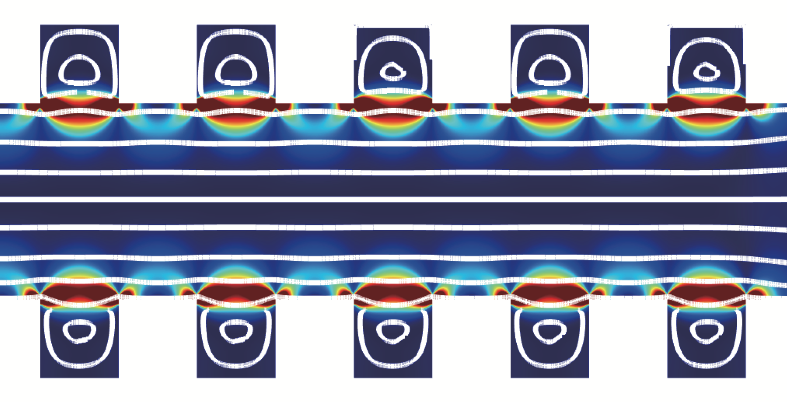
In a new study recently published in Physical Review X, scientists from the School of Physics at the University of New South Wales (Aydin Keser, Daisy Wang, Oleh Klochan, Dimi Culcer, Oleg Sushkov and Alexander Hamilton) together with colleagues from the Russian Academy of Sciences, the National University of Singapore, Cornell University, the University of Sheffield, and Robinson College at the University of Cambridge, examined one of the cornerstones of modern physics – fluid dynamics. In doing so, they discovered new applications in the transport of electrons in solids.
According to lead researcher, Professor Alexander Hamilton, “In most solids, electron transport is dominated by extrinsic factors, such as sample geometry and scattering from impurities. However, in the hydrodynamic regime, Coulomb interactions transform the electron motion from independent particles to the collective motion of a viscous ‘electron fluid’. The fluid viscosity is an intrinsic property of the electron system, determined solely by the electron-electron interactions. Resolving the universal intrinsic viscosity is challenging, as it affects the resistance only through interactions with the sample boundaries, whose roughness not only is unknown but also varies from device to device.”
It is at this stage of examination wherein the researchers eliminate all unknown parameters by fabricating samples with smooth sidewalls to achieve the perfect slip boundary condition that has been elusive in both molecular fluids and electronic systems. Researchers then engineer the device geometry to create viscous dissipation and reveal the true intrinsic hydrodynamic properties of a 2D system. Following this, they were able to observe a clear transition from ballistic to hydrodynamic electron motion, driven by both temperature and magnetic field. By directly measuring the viscosity and electron-electron scattering lifetime (the Fermi quasiparticle lifetime) over a wide temperature range without fitting parameters, the researchers demonstrated a strong dependence on electron density that cannot be explained by conventional theories based on the random phase approximation.
